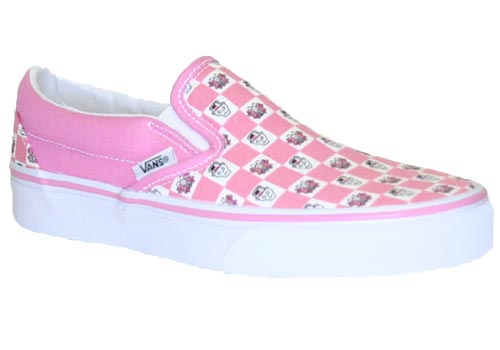Other posts in this series: All about Patterns, All about Fabrics, How to Dye Silk for Fabric Skating Skirts, Altering Your Growing Skater's Figure Skating Dress, Laying out the Pattern.
Ice Girl eats like a horse. I swear that kid already measures 16 hands. And she’s still growing. She's all arms and legs and skinny, skinny, skinny. Even so, it’s tough to hide the fact that she’s growing when her butt cheeks peek out from behind her figure skate dress panties.
That’s why I found myself frantically sewing the disco ball
Believe it or not, I sewed two new dresses in two weeks because I’m lazy. Yep. Adjusting a figure skating dress that a skater has outgrown can be done, but it involves ripping out stitches (which I hate) and other surgical procedures. If you're new to sewing, do yourself a favor and take the figure skating dress to a good alterations shop. Bring along whatever fabric you'd like the alterations gal to use. It's much more fun to pay someone else to curse at the dress than to curse at it yourself, I tell you.
However, if you insist upon altering the figure skating dress, here’s how to go about it:
WHEN THE DRESS IS TOO SHORT
The leotard method. Readers of Ice Mom’s Sewing Guide know that I favor the leotard method for fitting because it eliminates the seam line between the panty and the bodice, which makes alterations for length a walk in the park. For information about the method, you’ll have to click on the link in the previous sentence. I’m going to write assuming you know what the leotard method is.
If you have a dress made with the leotard method, adjusting for the skater’s growing body is pretty easy. Rip out those zig-zag stitches you used to attach the skirt. Set the skirt aside to make scrunchies or as practice material for your serger. You can also add a line of Spandex to the skirt, but if you’re that advanced, you know how to do it. New sewers should cut a new skirt with a generous length. Rip out the crotch seam. Cut a new crotch insert and baste it to the crotch panty back and panty front. Have the skater try it on. Does it fit? Adjust it or sew it in pemanantly and then insert elastic like you normally would do (I’ll be writing more about elastic in a future Sewing Guide). Have the skater try on the leotard and gently pin the skirt in place so it hangs over the panty and is straight. Measure up for the hemline, too, and mark the length. Have the skater take off the leo. Mark the skirt placement line and unpin the skirt. Pin the skirt to the placement line, right sides together, with the hemline pointing in the same direction as the neckline. Attach with a zig-zag stitch. At the hemline mark, machine baste all the way around at whatever measurement you’ve decided on. For example, if the skirt’s an inch-and-a-half too long, I’d run a line of machine basting 1.5 inches from the hem’s cut edge. Cut it with scissors and finish the hem with nothing (spandex, netting), a rolled hem (any fabric), or a small folded hem (any fabric).
The pain-in-the-rear method. Better you than me, people. I just make a new dress and sell the old one in a club resale. However, if you and your skater just love, love, love the small dress and it’s not made with the leotard method, here’s what you do. You'll never catch me doing this: it's a lot like work.
On the inside of the dress, rip out the skirt/panty/bodice seam line. If the dress is lined, this is going to complicate matters. Somehow, you’ve got to get to that skirt/panty/bodice seam line, though.
Once the dress is in pieces, set the old skirt aside for scrunchies or serger scrap. You can also add a line of Spandex to the skirt; attempt it only if you already know how to do it. Cut a new skirt with a generous length instead. There are more worthwhile things to do with your life than mess with the old skirt.
Cut a perfect rectangle of fabric that’s the length you’ll need to make the dress fit, plus 1/2 inch. You can sew it in two ways.
Less bulk, uglier seam: 1) Machine baste along the top raw edge of the insert fabric, 1/4 inch from the raw edge. Lay the insert fabric right side up. Place the raw edge of the panty fabric along the basting line and pin. Sew with a cover stitch (if you have a cover stitch machine), a double needle in a standard machine, or a zig-zag that catches the raw edge of the panty fabric. Baste the new skirt to the top of the insert (I use a wide zig-zag). Attach to the bodice with whatever seam treatment you use for stretch fabrics.
More bulk, prettier seam: 2) Pin insert and panty edges, right sides together. Stitch as you would any Spandex seam with a 1/4-inch seam allowance. Baste the new skirt to the top of the insert (I use a wide zig-zag). Attach to the bodice with whatever seam treatment you use for stretch fabrics.
Have the skater try on the dress and mark the hemline. Have the skater take off the dress. At the hemline mark, machine baste all the way around at whatever measurement you’ve decided on. For example, if the skirt’s an inch-and-a-half too long, I’d run a line of machine basting 1.5 inches from the hem’s cut edge. Cut it with scissors and finish the hem with nothing (spandex, netting), a rolled hem (any fabric), or a small folded hem (any fabric).
The stripe method. An easier way to do this is to add a stripe around the entire bodice. This isn’t as ugly as you might think. Consider how a stripe of athletic mesh or a complementary spandex color might look on the dress. Would it look good? Fabulous. You’re in luck. You don’t have to mess with the panty or the skirt at all. Cut a perfect rectangle of fabric that’s the length you’ll need to make the dress fit, plus 1/2 inch. Machine baste along the top and bottom raw edges of the insert fabric, 1/4 inch from the raw edge. Draw the line where you’ll be inserting your fabric on the bodice and back with chalk or a water soluble marker. Zig zag close to the line on both sides of it, but not on top of it. Sewing very straight is crucial. If you can’t sew straight, don’t use this method. Cut the dress along the chalk/marker line so you have the bodice in two pieces. Lay the insert fabric right side up. Place one raw edge of the bodice fabric, right side up, along the basting line and pin. Sew with a cover stitch (if you have a cover stitch machine), a double needle in a standard machine, or a zig-zag that catches the raw edge of the panty fabric. Do the same with the other side of the insert fabric and the other bodice half. You can continually expand a dress with this stripe method. (Which I might do to Ice Girl’s Disco Ball dress.)
WHEN THE DRESS IS TOO NARROW
Welcome to the world of the gusset. A gusset is a triangular piece of fabric that you slip into the side seams of any garment. You might be familiar with the gusset from the crotch area of some tights, especially athletic tights or long underwear. You might be familiar with gussets if you’re a knitter. If you have expensive, tall leather boots, you might have an elastic gusset at the top to accommodate your calf. The photo of the slip-on canvas shoe (above) has an elastic gusset at the tongue. If you have a suitcase or a briefcase that has an accordion fold, those folds are gussets, too.
Beware: this is not a universal fix. Slip too much fabric in at the arm hole and you’ll mess up the sleeve. That, readers, is major surgery. I try to leave sleeves alone. However, if you are a master seamstress and are willing to share your sleeve gusset techniques, please consider this your invitation!
Let’s face it, folks: this is down-and-dirty sewing. From the stands, no one’s going to see the gussets. If they’re small, they’ll even be hard to spot up close, but they won’t be invisible. Do not accentuate these gusset seam lines with crystals or sequins.
Too narrow at the hip: About how much wider do you want the area to be? Divide that measurement by two and add 1/2 inch (that’s for the seam allowance). That’s the base of the gusset triangle. You’ve got a decision to make here: How tall do you want the triangle? The taller the triangle, the more it’s going to show. For a big-based gusset, make it tall. For a small-based gusset, make it short .Cut six triangles for a standard construction dress (bodice, panties, skirt) and two diamonds and two triangles for a leotard construction dress. If you’re cutting diamonds, they should be as if you’re putting two triangles together at the bases. Be sure to add a seam allowance at the base, too.
Rip the skirt seams, the dress’s side seams, and the dress’s bodice-waist seams, if any.
Insert the triangles or diamonds into the side seams with the tiny points pointing away from the waistline and the bases along the waistline. Sew in place, right sides together. Yes, it’s a pain, especially at those points. It helps if you think that you’re sewing them like a standard dart. In other words, sew the sides until you can’t sew anymore. Then take it off your machine, fold in half through the point, pull on the point, and sew like a dart. If sewing a standard dart means nothing to you, do not attempt the gusset. You can also hand sew it. Again, this is why I just go ahead and make a new dress. Finish this step for all triangles or diamonds. You should have gussets in the side seams for the panty, bodice, and skirt. Reattach all.
Too narrow at the bust: This is the same procedure as for the waist gussets, so you should read that procedure (above) first. You can open the side seam and slip in a triangle in both the side seam and the arm. The danger is that the sleeve will become so large that it will hang down way past the skater’s armpit. However, you can use gussets in this area in small amounts.
You can also open up the bodice at the bust line, if the skater has had a dramatic development in that area. Have her try on the dress and, yes, mark the pointy part. I know. Ice Girl would hate it, too. Again, you can see the appeal of making a new dress. When your skater takes off the dress, Draw a straight line from your mark to the seam line. Zig zag on both sides of the line you drew and cut straight down the line.
Draw a line on the back bodice, opposite the cut on the front. You want this line to be very short so the triangle insert will be very squatty. I'd go with maybe 1" to 1 1/2" tall. Zig zag on both sides of the line and slice the dress open.
Cut four triangles and add a 1/4-inch seam allowance to all sides. All four triangles will have the same base width, but a different height (the back ones are squatty, remeber?). The triangles for the front and back bodice pieces should match up to the cut line, plus 1/4 inch. Sew the triangles to the bodice pieces following the instructions for inserting triangles in the too narrow at the hip section.
See? I skip this whole nightmare and make a new dress. It’s much more satisfying and I curse a lot less.
Update: From reader, blogger, coach, advisory board member, and skating parent Xan of Xanboni! (visit her comment for links to photos): You can also grow a complex, jeweled dress using the leotard method. If you're making a really elaborate dress like the ones linked below, make a double leotard lining with a flesh toned fabric, and a third leotard to which you affix the design elements. When you want to alter it, simple remake or alter the undertard (as I always called them), and carefully refit the design elements to it.
Update: From reader Anonymous who outwits the growing process in a very clever way: I will add 2 inches extra to the leotard in the hip area and then sew it in a tuck with the fabric to the inside. The seamline is about two inches below where I'm going to put the skirt (leotard method). Once they grow, let out the tuck, and depending on where the skirt then sits, move the skirt. It can sit lower on the hip and still cover the bum and there is enough play in the waist of the skirt if spandex. If it's chiffon, carefully cut the waist a touch bigger, probably only 1/4 inch, or again, plan ahead and make it a front overlap style.
What do you do when your skater outgrows his or her favorite outfit? Please share your rites and rituals in the comments! No need to share your curse words. I've got that part down.
Have a question for Ice Mom? Please consider this an invitation to e-mail me at icemom.diane@gmail.com.












2 comments:
You can also grow a complex, jeweled dress using the leotard method. If you're making a really elaborate dress like the ones linked below, make a double leotard lining with a flesh toned fabric, and a third leotard to which you affix the design elements. When you want to alter it, simple remake or alter the undertard (as I always called them), and carefully refit the design elements to it. I grew the red dress from a child large to an adult 12.
http://tiny.cc/iMJ3k
http://tiny.cc/qY9nb
For a skater who might grow or is in the middle of the growth spurt (the year in which they change their skates four times), I will add 2 inches extra to the leotard in the hip area and then sew it in a tuck with the fabric to the inside. The seamline is about two inches below where I'm going to put the skirt (leotard method). Once they grow, let out the tuck, and depending on where the skirt then sits, move the skirt. It can sit lower on the hip and still cover the bum and there is enough play in the waist of the skirt if spandex. If it's chiffon, carefully cut the waist a touch bigger, probably only 1/4 inch, or again, plan ahead and make it a front overlap style.
I have also added insert of fabric as a band around the hip, if it fits right under the skirt waistline it's rarely seen. It is much easier than messing with altered leg elastics and doesn't change the shape of the bum curve.
Post a Comment